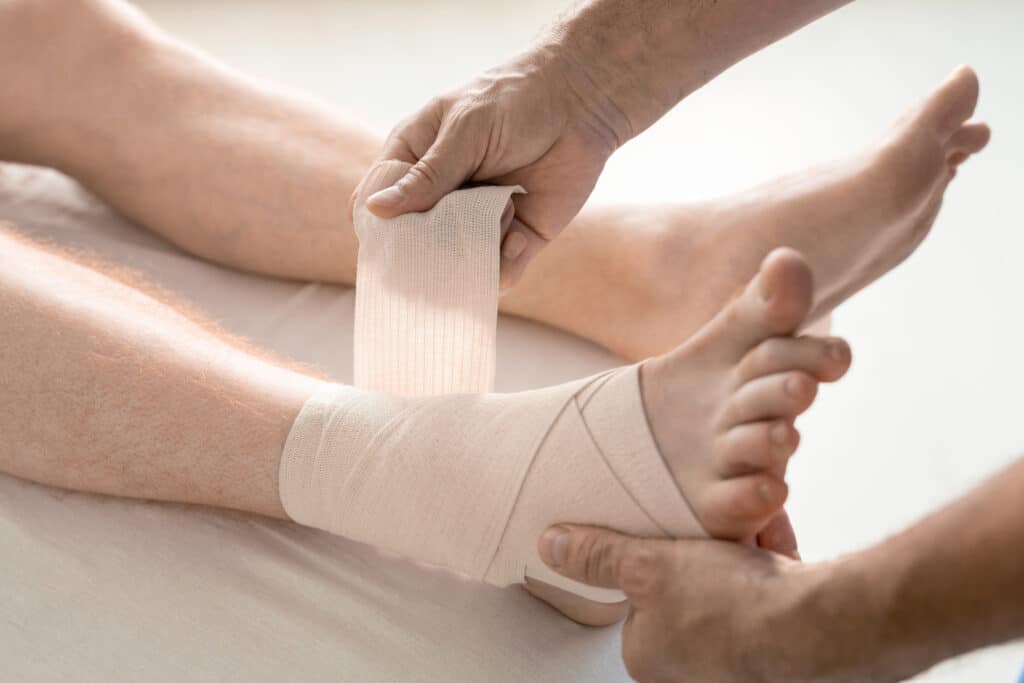Orthopedic injuries affect the musculoskeletal system, including bones, muscles, joints, ligaments, and tendons. These injuries can happen due to accidents, overuse, or age-related wear and tear. Understanding the causes, recognizing symptoms early, and seeking appropriate treatment are crucial for recovery and maintaining mobility. This guide explores common orthopedic injuries and how they can be effectively treated.
What Are Orthopedic Injuries?
Orthopedic injuries refer to damage or trauma to the body’s musculoskeletal system. They range from minor strains and sprains to severe fractures and joint dislocations. Orthopedic specialists diagnose and treat these conditions to help patients regain function and reduce pain.
Common Orthopedic Injuries: Causes and Symptoms
1. Sprains and Strains
- Causes: Sudden twisting, overstretching, or tearing of ligaments (sprains) or muscles/tendons (strains), often during sports or physical activities.
- Symptoms: Pain, swelling, bruising, limited movement, and muscle spasms.
2. Fractures (Broken Bones)
- Causes: High-impact trauma such as falls, car accidents, or direct blows. Osteoporosis can also increase fracture risk.
- Symptoms: Intense pain, swelling, deformity, inability to move the injured limb, and sometimes bruising.
3. Dislocations
- Causes: Forceful impact or sudden twisting causing a bone to move out of its joint. Common in shoulders, fingers, and knees.
- Symptoms: Visible deformity, severe pain, swelling, and inability to move the joint.
4. Tendonitis
- Causes: Repetitive motion or overuse, leading to inflammation of tendons, commonly affecting the elbows, shoulders, wrists, and knees.
- Symptoms: Pain, tenderness, and stiffness near affected tendons.
5. Bursitis
- Causes: Repetitive pressure or trauma causing inflammation of the bursae (fluid-filled sacs cushioning joints).
- Symptoms: Swelling, pain, and limited joint movement, often around shoulders, hips, or knees.
6. Meniscus Tears
- Causes: Sudden twisting or trauma to the knee, common in athletes.
- Symptoms: Knee pain, swelling, stiffness, and difficulty bending or straightening the knee.
7. Carpal Tunnel Syndrome
- Causes: Compression of the median nerve in the wrist due to repetitive hand movements or wrist injury.
- Symptoms: Numbness, tingling, weakness, or pain in the hand and fingers.
Effective Treatments for Orthopedic Injuries
1. Rest and Immobilization
Limiting movement and using braces or splints help protect injured areas and reduce further damage.
2. Physical Therapy
Targeted exercises improve strength, flexibility, and mobility to support healing and prevent future injuries.
3. Medications
Pain relievers and anti-inflammatory drugs reduce pain and swelling.
4. Cold and Heat Therapy
Applying ice reduces inflammation, while heat relaxes muscles and improves blood flow.
5. Surgical Intervention
For severe injuries like complex fractures or torn ligaments, surgery may be necessary to repair damaged tissues.
6. Rehabilitation
Post-treatment rehabilitation focuses on restoring function and preventing re-injury through customized exercise programs.
When to See an Orthopedic Specialist
Seek professional care if you experience:
- Severe pain or swelling
- Visible deformity or inability to move a joint
- Persistent discomfort affecting daily activities
- Numbness or weakness in limbs
- Signs of infection such as redness, warmth, or fever
Early diagnosis and treatment are vital for optimal recovery.
Tips for Preventing Orthopedic Injuries
- Warm up before exercise
- Use proper techniques and equipment during physical activities
- Maintain a healthy weight
- Strengthen muscles through regular exercise
- Avoid repetitive stress on joints
- Wear supportive footwear
Conclusion
Orthopedic injuries can range from mild to severe but can often be treated effectively with timely care. Understanding the causes and symptoms helps you recognize problems early and seek appropriate treatment. Whether through rest, therapy, medication, or surgery, orthopedic care aims to restore your mobility and improve your quality of life. Prioritize your musculoskeletal health by taking preventive measures and consulting specialists when needed.

